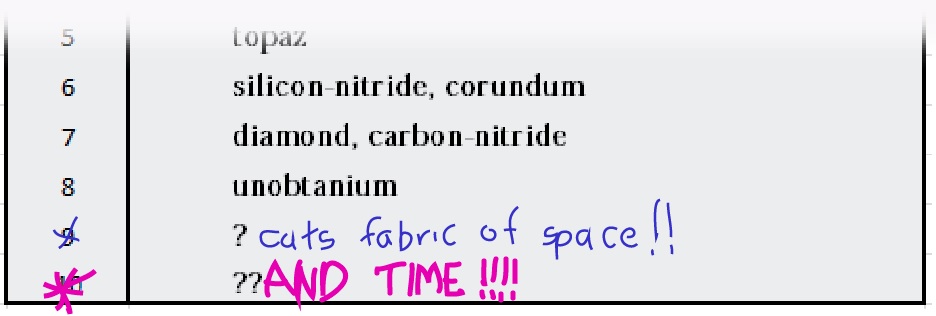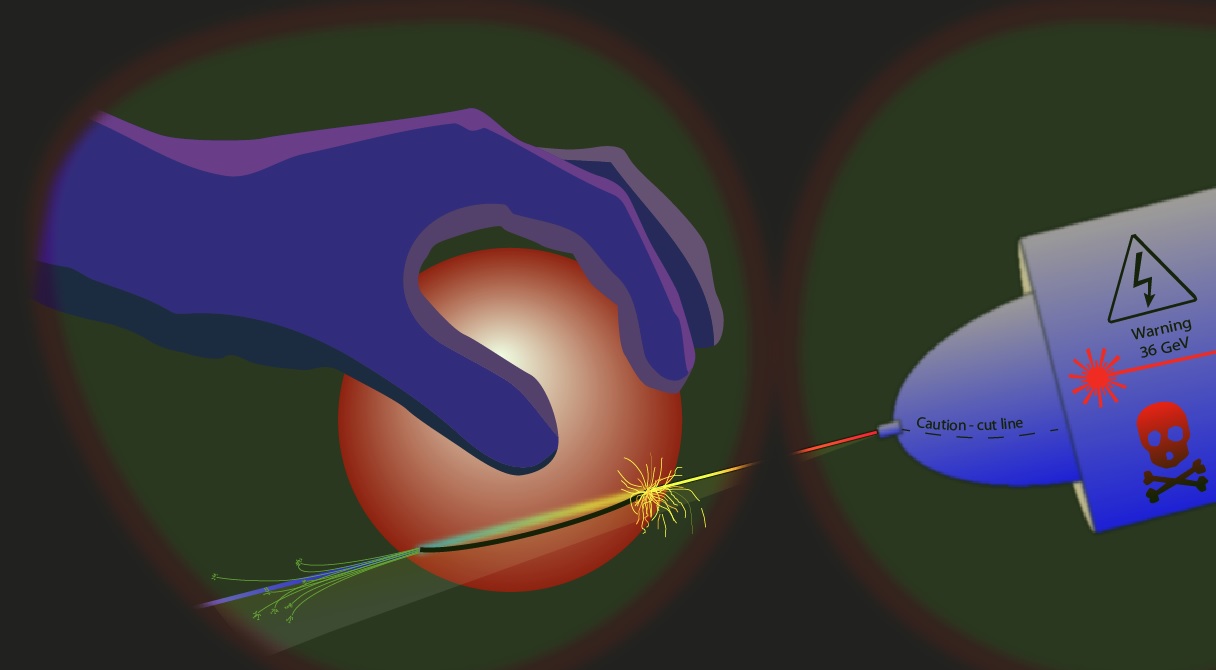I enjoy spending time with Ernie when he is 'pottering' in his workshop. It is a large open-plan area filled with soldering-stations and oscilloscopes, lathes and milling machines, band-saws and drill-presses, vacuum pumps and x-ray spectrometers... If you can name a tool or piece of equipment, Ernie most probably has one (always of the top quality) and it is almost always a pleasure to use them. But there is a small annex at the back of the workshop - which I prefer not to visit. It is crammed with experimental 'alpha' prototypes of equipment considered to be "not quite ready for commercial production". They are leant to Ernie by a range of manufacturers for testing purposes. He benefits from early access to exotic technologies, and they benefit from shake-down tests, stress tests, and comments Ernie provides in the form of annotations to their provisional 'Application Notes'. Some of the prototypes can be more than a little disconcerting - tools like the Plasma-discharge Paint Stripper, the Magneto-hydrodynamic Glue-gun, and the 4D Printer (even Ernie hasn't got his head around that one yet). But worst of all in my opinion, is Acne Imdustry's Heavy Hadron Beam Auto Guillotine (Ernie has nicknamed it Louisette for some reason or other) - that thing absolutely terrifies me!
So when Ernie asked me to "Please cut a tetrahedron (doesn't have to be regular) from each of these two Unobtanium spheres", and then when I started walking towards the power hacksaw Ernie said "You'll never cut through it with that", and then when I glanced at the diamond saw Ernie said "I think you will need something sharper", and then when he glanced over at Louisette hulking menacingly in the corner - my heart sank! But I had already offered to help, so what else could I do but sigh deeply, carry the spheres to the annex, and start reading the HHBAG Instruction Manual? I only skimmed through the technical sections (what on earth is a 'quark-gluon soup' anyway?), but made sure to read the operational and safety sections very carefully. The bold text on page 1 that read "WARNING: USE AT OWN RISK. CARELESS USE MAY RESULT IN AMPUTATION OR OTHER BODILY INJURY" didn't exactly ease my nervousness.
 I donned the padded-trousers, the titanium-tipped boots, the reflective flack-jacket, the ear-muffs, respirator, the hard-hat, the welding goggles, and the Faraday cage gloves and carefully turned the power dial down to 8 (lucky I had read Ernie's additions to the cutting power chapter), and set to work. Unfortunately, I could hardly see anything through the grade #17 goggles, my gloves were slippery from the factor 200 UV-protection cream I had liberally applied to any potentially exposed parts of my body, and I almost dropped the first sphere as I was cutting it. The result was a very wonky-looking tetrahedron, but I thought I did a better job with the second, slightly larger sphere (after wiping my gloves on the fire-proof cape and waiting for the nervous shaking to subside a little). I powered down Louisette, stripped off the safety gear, and waited the suggested seven half-life periods before taking the two tetrahedra back to Ernie. I thought he might be a bit disappointed by their irregular shapes (specially the first one), but he received them with a quick "thank-you" and set to work measuring them up and then installing them in his latest experimental device.
I donned the padded-trousers, the titanium-tipped boots, the reflective flack-jacket, the ear-muffs, respirator, the hard-hat, the welding goggles, and the Faraday cage gloves and carefully turned the power dial down to 8 (lucky I had read Ernie's additions to the cutting power chapter), and set to work. Unfortunately, I could hardly see anything through the grade #17 goggles, my gloves were slippery from the factor 200 UV-protection cream I had liberally applied to any potentially exposed parts of my body, and I almost dropped the first sphere as I was cutting it. The result was a very wonky-looking tetrahedron, but I thought I did a better job with the second, slightly larger sphere (after wiping my gloves on the fire-proof cape and waiting for the nervous shaking to subside a little). I powered down Louisette, stripped off the safety gear, and waited the suggested seven half-life periods before taking the two tetrahedra back to Ernie. I thought he might be a bit disappointed by their irregular shapes (specially the first one), but he received them with a quick "thank-you" and set to work measuring them up and then installing them in his latest experimental device.
 Much later, when I was recovering with a very large glass of very strong home-made gin, Ernie told me that the two tetrahedra were rather interesting.
Much later, when I was recovering with a very large glass of very strong home-made gin, Ernie told me that the two tetrahedra were rather interesting.
- In each of them, the areas of the four individual faces were in the exact ratio 1:2:3:4.
- Each of them had a surface area totaling exactly 100 cm^2.
- The first one had (very very nearly) the largest surface area for any tetrahedron that could possibly have been cut from the first Unobtanium sphere.
- The second one had the largest volume for any tetrahedron that could possibly have been cut from the second Unobtanium sphere.
And then he told me that from the information he had just provided (and if I wished to indulge in a little "back of the envelope maths"), it would be possible to calculate the exact diameter of each of the spheres. I thought he was pulling my leg in that last statement, but do you think he is correct? If so, I would love to surprise him by telling him exactly how big each of the spheres was. Can anybody help me with that?


